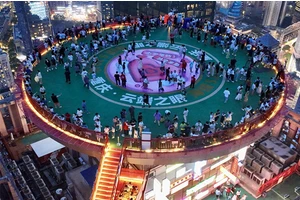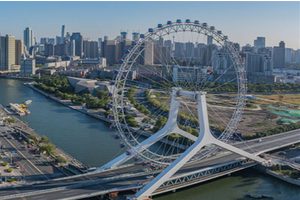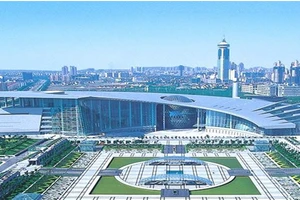Travel poster
Poster design
Open classification: advertising, art, painting, design, poster
Poster and poster design
Characteristics of posters
Limitations of poster design
The law of poster design
Design steps of poster
Color used in poster design
Poster and poster design
[Edit this paragraph]
The so-called posters, also known as "posters" or posters, belong to outdoor advertisements and are distributed in streets, cinemas, exhibitions, commercial areas, airports, docks, stations, parks and other public places. They are called "instant" street art abroad.
Although the development of advertising industry is changing with each passing day, new theories, new concepts, new production techniques, new means of communication and new media forms are constantly emerging, posters can never be replaced, and they still exert vitality in specific fields, and have achieved satisfactory advertising effect, which is mainly determined by their characteristics.
Characteristics of posters
[Edit this paragraph]
● Large screen: As an outdoor advertisement, the poster screen is larger than all print advertisements, with large illustrations and large fonts, which is very eye-catching.
● Strong farsightedness: The function of the poster is to convey information to people who are long-distance and moving outdoors, so the farsightedness effect of the work is strong.
● Wide content: Posters have a wide range of publicity, which can be used in public elections, sports, transportation, safety, environmental protection, etc., as well as commercial products, enterprises, tourism, services, culture, education and art, and can play a wide role.
● Concurrentness: The difference between design and painting is that design is objective and communicative, while painting is subjective and appreciative. Poster, on the other hand, is a media integrating design and painting.
● Repeatability: Posters can be posted at will on designated occasions, either one or several times for intensive and strong communication.
Limitations of poster design
[Edit this paragraph]
● Text restriction: Posters are for people who are far away and moving, so the text should be less than more.
● Color restriction: Posters should have fewer colors than more.
● Image limitation: Generally, the image of the poster should not be too detailed and comprehensive, but should be summarized.
● Posting restrictions: It is not appropriate to post in public places at will, but must be posted in designated places.
The law of poster design
[Edit this paragraph]
● Novelty: Although all media need novelty, posters are more demanding, because they only play the role of communication in an instant, and they especially need the heterogeneity of visual communication.
● Simplicity: Although all media need to be "concise", posters are more demanding. Because it is an outdoor advertisement, the more concise the poster, the more prominent the theme, the more focused the focus and the richer the content.
● Exaggeration: Because posters play a strong communication role in the distance, it is necessary to mobilize exaggeration, humor, close-up and other means of expression to reveal the theme and clarify the psychological needs of consumers.
● Conflict: "Conflict" is also a contrast, including two aspects: first, "conflict" in form and rhythm; The second is the contradiction in content.
● Straightness: Art requires subtlety, while posters require straightforwardness.
Design steps of poster
[Edit this paragraph]
In the process of poster design, there are two common situations: one is to read all kinds of materials before design, select appropriate forms and techniques for transplantation, and apply the design content in a completely new way. The other is not looking for any information, relying on their knowledge, passion and strength, combined with the rules of poster design to conceive and compose. As a result, the former seems to be rigid and less aura, and there are many imitation factors; The latter idea is clear, and the vision is smooth, full, vivid and personalized. Although we want to advocate the latter design method, as a candidate who has never studied design, to learn posters well in just a few days, we can only use the first method to learn from other people's successful posters, read a lot of relevant materials, and master the rules of forms and techniques of posters, so as to turn them into our own designs.
Color used in poster design
[Edit this paragraph]
The stimulation of color has an important influence on people's psychology or physiology. In today's fast-paced life, in order to make busy people know the contents of posters in an instant, poster colors should use more intense contrast tones. Therefore, color contrast is one of the commonly used expression techniques in poster design, and its purpose is to make the theme image as bright as possible, quickly convey it to the audience in an instant and leave a deep impression. There are usually the following comparison methods: hue contrast, lightness contrast, cold and warm contrast, complementary color contrast and area contrast.
Color is the "soul" of posters, which should be symbolized and associated. For example, white can be associated with purity, holiness and high quality, black can be associated with seriousness and shock, yellow can be associated with happiness and warmth, and blue can be associated with peace and tranquility. In a word, only on the basis of fully understanding and mastering the use of color can the color of the design play an internal and external echo role and achieve the ideal publicity effect of the poster.
The examination questions of poster design are generally based on public service advertisements and cultural advertisements. Common themes of public service advertisements include "saving water", "ecological balance", "caring for trees" and "protecting animals", while common themes of cultural advertisements include sports games, concerts, film festivals, clothing festivals and some major events and festivals. Explain what "poster" is, and the "poster" design is self-evident.
"Poster" is interpreted according to its meaning, "move" is to guide attention, and "paste" is to post, that is, "post for attracting attention". The English name of the poster is "Poster", which in the Oxford English Dictionary means a notice displayed in a public place. In the advertising dictionary published by "International Textbook Publishing Company" in London, poster means the printed advertisement posted on cardboard, walls, large wooden boards or vehicles, or displayed in other ways. It is the main form of outdoor advertising and one of the oldest forms of advertising.
Some people interpret the meaning of posters according to the root structure and anecdotes of poster, and think that poster is converted from "post", and the meaning of "post" is column, so poster refers to all notices posted on columns.
Posters also have a name called "poster" in China, and no Chinese dictionary has given a special explanation for the word "Poster". However, it is said that during the Qing Dynasty, foreigners berthed at China's coastal docks with foreign goods on sea boats, and posted Posters in conspicuous places along the street of the docks to promote their goods. Coastal citizens called this Poster a poster. According to this development, all posters with similar purposes and other messages are called "posters" in the future.
In foreign countries, posters have standard sizes. According to the British standard, the most basic size of poster is 30 inches× 20 inches (508×762mm), which is equivalent to the domestic folio size. According to this basic standard size, other standard sizes have been developed: 30 inches× 40 inches, 60 inches× 40 inches, 60 inches× 120 inches, 10 inches× 6.8 inches and 10 inches× 20. The large size is made up of multiple pieces of paper. For example, the maximum standard size of 10 feet× 20 feet is made up of 48 pieces of 30 inches× 20 inches of paper, which is equivalent to the size of 24 pieces of fully opened paper in China. Posters specially designed to attract pedestrians are generally posted on bus shelters and highways in downtown areas, and most of them are 60 inches ×40 inches. However, posters on public information walls and advertising information places (such as the wall of London subway station) are mostly 30-inch× 20-inch posters and 30-inch× 40-inch posters.
There are four most commonly used poster sizes in the United States: one poster (508mm×762mm), three posters, 24 posters and 30 posters. Among them, the most commonly used poster is 24 posters, which belong to huge posters and are generally posted on sidewalks where pedestrians must pass and where they sell goods.
Posters are mostly made by plate printing for posting in public places and inside and outside shops. Of course, there are also some posters for temporary purposes, which are only hand-painted without printing. Such posters are of a pop nature, such as temporary price reduction of goods, and notification of the time and place of trade fairs, trade fairs, fashion shows or food tastings. This kind of impromptu hand-painted poster is sometimes replaced by post-it notes, mostly with hand-painted calligraphy, sometimes with illustrations, which is more casual and quick, and it is not as rigorous as printed posters. Its advantages are timely information dissemination, low cost and simple manufacture.
Printed posters can be divided into two categories: public posters and commercial posters. Public posters focus on social welfare issues, such as tax payment, smoking cessation, eugenics, election campaign, blood donation, traffic safety, environmental protection, peace and publicity of cultural and sports activities. Commercial posters focus on promoting goods and satisfying consumers' needs. Especially with the emergence and development of market economy, commercial posters are becoming more and more important and widely used.
Literature and art, education, news, publishing, sports, tourism, drama, movies, exhibitions, cultural relics protection and scientific and technological achievements can all be called cultural posters.
The difference between cultural posters and public service posters and commercial posters lies in that they are rooted in reality and convey specific information about a specific time and space, which is different from the social responsibility of public service posters and the commercial purpose and utility of commercial posters. Cultural posters often use relaxed and pleasant graphics to stop people who pass by in a hurry on the street. Designers of cultural posters often spend a lot of time and energy to create mobile posters that communicate with people visually. In this regard, cultural posters have become posters that some of the most talented designers are willing to design.






